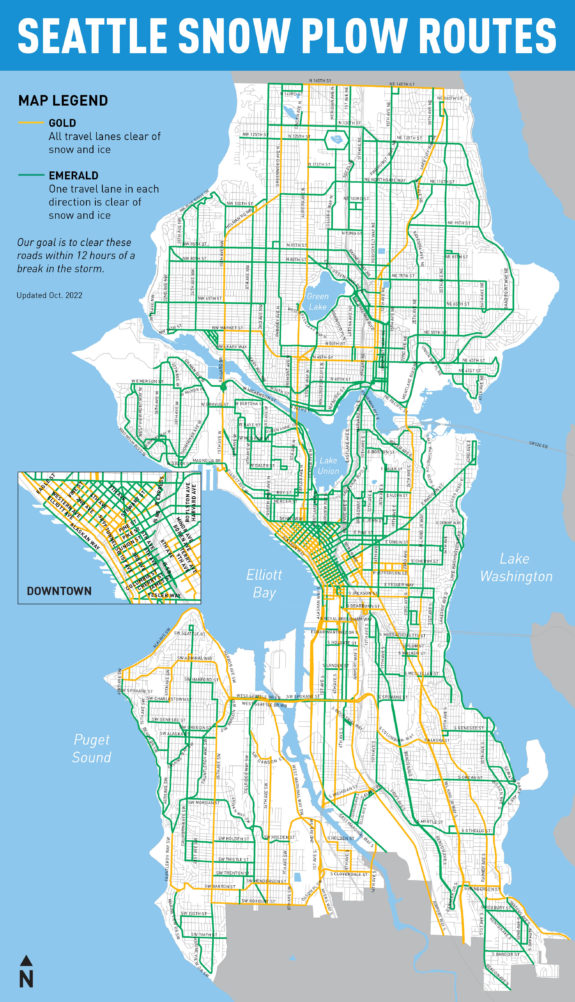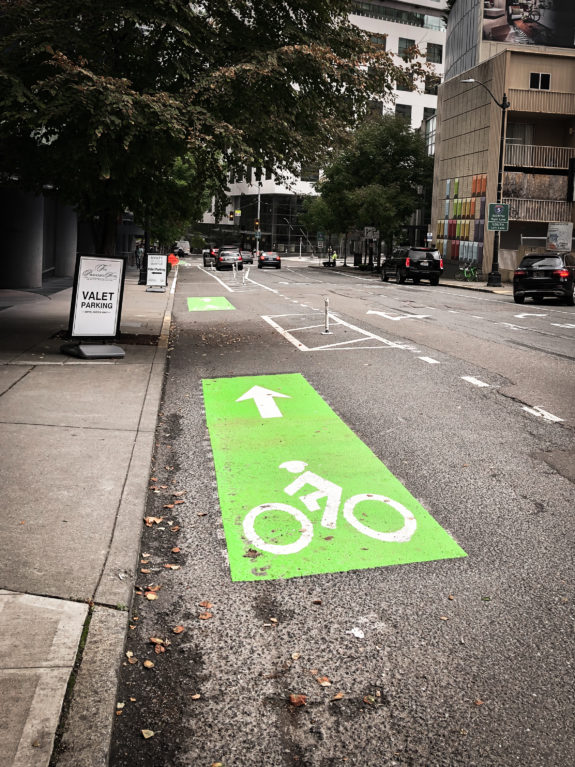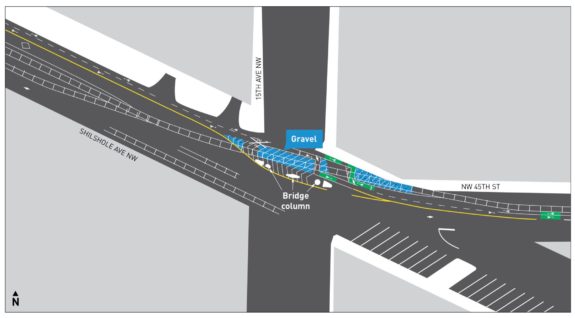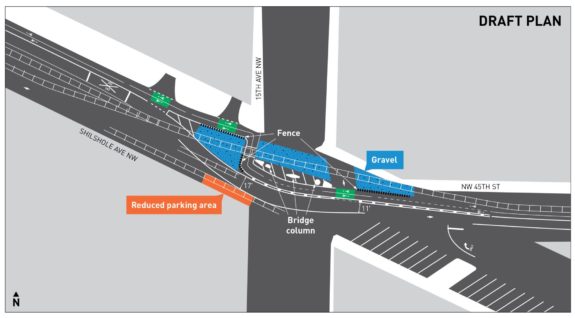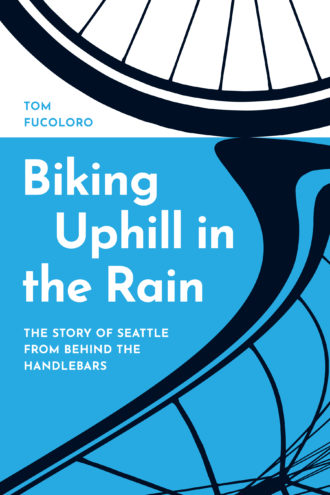If you’re heading out on a bike in the snow, you’ll quickly figure out that a lot of the slower streets and bike paths you typically ride have not been plowed. So unless you have a fully winterized bike with snow tires and everything, you may need to reroute to the priority snowplow streets until the side streets are rideable again. The priority snow plow routes are typically busier main arterials and bus routes. Even on the streets with bike lanes, do not expect them to be fully usable.
The two best real-time tools for roadway conditions are the SDOT Winter Weather Response Map and the city’s traffic cameras.
The Winter Weather Response Map notes which streets have been plowed and treated as well as how recently it happened. It also shows which streets have not yet been treated but that are on the to-do list. It’s a good idea to double-check road conditions by looking at the traffic camera feeds along your planed route if a camera exists.
Of course, none of this guarantees a smooth ride, and riding in mixed traffic on slick roads is not for everyone. Take it slow and don’t trust plows to get every single patch of ice. And definitely don’t trust drivers to take proper care.
Also, grab a shovel and clear the sidewalks. The city makes it each property owner’s responsibility to their sidewalks, which is kind of messed up when you consider that they don’t do the same for streets. But that’s the way it is, so get shoveling or hire a neighborhood kid to do it for you (is that still a thing?).
SDOT posted more winter resources in a recent blog post. Below is the winter 2022 snow plow priority routes map for reference, though the real-time map is more useful:

